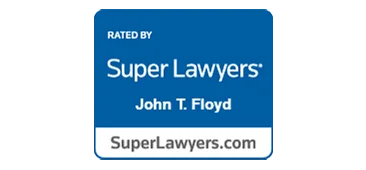Blog
U.S. Supreme Court Addresses Joint and Several Liability in Forfeiture Cases

On June 5, 2017, the U.S. Supreme Court issued a significant decision, Honeycutt v. United States, that limits the ability of the government to collect criminal asset forfeiture in drug conspiracy cases.
The Comprehensive Forfeiture Act of 1984, codified in 18 U.S.C. §853, mandates the forfeiture of “any property constituting, or derived from, any proceeds or indirectly, as the result of” certain drug crimes.
Joint and Several Liability
The Government has always pursued the legal premise, as stated by the Supreme Court, that “a defendant may be held jointly and severally liable for property that his co-conspirator derived from the crime but that the defendant himself did not acquire.”
In a unique legal twist, the Honeycutt court offered the following hypothetical to illustrate the issue before the justices:
“ … Suppose a farmer masterminds a scheme to grow, harvest, and distribute marijuana on local college campuses. The mastermind recruits a college student to deliver packages and pays the student $300 each month from the distribution proceeds for his services. In one year, the mastermind earns $3 million. The student, meanwhile, earns $3,600. If joint and several liability applied, the student would have to face a forfeiture judgment for the entire amount of the conspiracy’s proceeds: $3 million. The student would be bound by that judgment even though he never personally acquired any proceeds beyond the $3,600. This case requires determination of whether this form of liability is permitted under § 853(a)(1).
Section 853 applies only to certain serious drug crimes. The type of property that is subject to forfeiture is spelled out in three provisions of Section 853:
- First, (a)(1), limits forfeiture to “property constituting, or derived from, any proceeds the person obtained, directly or indirectly, as the result of” the crime;
- Second, (a)(2), restricts forfeiture to “property used, or intended to be used, in any manner or part, to commit, or to facilitate the commission of” the crime; and
- Third, (a)(3), applies to persons “convicted of engaging in a continuing criminal enterprise”—a form of conspiracy that requires forfeiture of the kind of property spelled out in the above two subsections.
Polar Pure, Manufacture of Methamphetamine
The case before the Supreme Court involved Terry Honeycutt who managed a hardware store owned by his brother, Tony, in Chattanooga, Tennessee. Terry managed sales in the store. The store stocked and sold a product called Polar Pure. After noticing a number of “edgy looking people” buying the product, Terry contacted the local police to inquire about whether the “iodine crystals” in the product could be used to manufacture methamphetamine. The police said it could, and advised Terry not to sell the product if it made him “uncomfortable.”
The brothers continued to sell Polar Pure for the next three years, grossing nearly $400,000 during that period. The sheer volume of the sales attracted the attention of the DEA and state law enforcement authorities.
In November 2010, these federal and state law enforcement officials executed a search warrant for the store and seized more than 300 bottles of Polar Pure. The Honeycutt brothers were indicted on a range of federal charges stemming from the sale of iodine used for the manufacture of methamphetamine. The Government immediately sought forfeiture money judgments under §853(a)(1) against each brother in the amount of $269,751.98.
Tony struck a plea deal with the Government, including an agreement to forfeit $200,000.00.
Terry elected to stand trial. A jury convicted him of conspiring and knowingly distributing iodine in violation several federal drug laws. The court imposed a 60-month sentence on him.
Salaried Employee, Did Not Benefit Personally
Despite conceding that Terry had no “controlling interest in the store” and “did not stand to benefit personally,” the Government urged the trial court to hold him “jointly liable” for the profit made from sales of the iodine-based product. The Government requested a money judgment of the remaining $69,751.98 it had earlier sought against both brothers.
The trial rejected the forfeiture request, finding that Terry was a “salaried employee” at the store and had not “personally received” any of the profits from the Polar Pure sales.
On appeal, the Sixth Circuit Court of Appeals overruled the trial court’s ruling on the forfeiture issue, finding that Terry was “jointly and severally liable” for the total money judgment.
Supreme Court Reverses Joint and Several Liability
The Supreme Court reversed the Sixth Circuit and reinstated the trial court’s decision.
The Court pointed to the language of §853(a) which limits the forfeiture to the “person” who “obtained” the proceeds from the crime. The Court said this language forecloses “joint and several liability for co-conspirators.” In so doing, the justices rejected the Government’s primary argument that:
“ … the Government asserts the ‘bedrock principle of conspiracy liability’ under which ‘conspirators are legally responsible for each other’s foreseeable actions in furtherance of their common plan’ … Congress, according to the Government, must be presumed to have legislated against the background principle of conspiracy liability, and thus, ‘when the traceable proceeds of a conspiracy are unavailable, [§]853 renders conspirators jointly and severally liable for the amount of the proceeds foreseeably obtained by the conspiracy.”
Forfeiture Limited to Property, Proceeds Acquired as a Result of the Crime
The Court instructed the Government that the “plain text and structures of §853 leave no doubt that Congress did not incorporate these background principles” in the criminal forfeiture statute.
The Court concluded its analysis with the specific finding that forfeiture under §853(a)(1) “is limited to property the defendant himself acquired as a result of the crime”
Take the first step toward protecting your freedom by contacting us now
Testimonials
John T. Floyd is Board Certified in Criminal Law By the Texas Board of Legal Specialization
Request A Confidential Consultation
Fields marked with an * are required
"*" indicates required fields



















